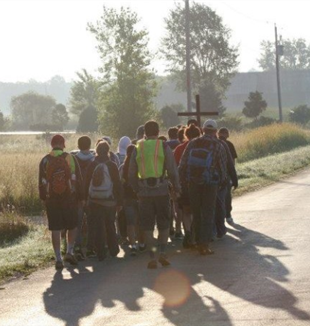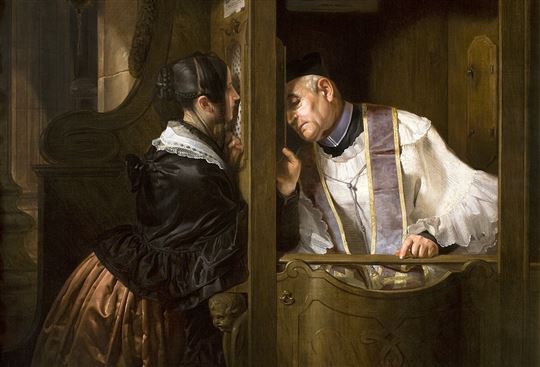
The Power and the Glory
In Graham Greene's The Power and the Glory, the supposed last priest in the province is executed. Like Greene's characters, we live as if Christianity were on the brink of extinction when, in fact, it regenerates life in different corners of the world.At the end of Graham Greene’s novel, The Power and the Glory, in the midst of the Mexican revolution, the local lieutenant executes what he believes to be “the last priest left in this province.” This image––a Church vanquished, brought to its knees––seems to be the common interpretation of many current events: the Irish referendum on same-sex marriage, for example, or the emergence of laws which threaten the exercise of religious freedom and which dismiss the value of human life.
Even in Catholic circles, this judgment is often shared. The Church, they think, has been vanquished. And it needs to get up and fight the battle for traditional values, spar with the atheists, increase their efforts in this or that issue in the cultural wars. Catholics on both the “left” and the “right” approach the situation of the Church in this way, as a political or cultural ideology, which must, depending on who you talk to and about which issue, either defend or compromise its interests.
But what if the Church is something completely different? What if the heart of the Church is not a set of dogmatic and rigid doctrines, but an event, something completely new that happens in the history of the world, which contains a profound response for every human being?
The interpretation of a Church vanquished, shared by those within and without, forgets that Christianity is primarily an announcement of good news, which is capable of renewing life, of giving genuine reasons to live and to work, to love and to suffer.
Three years ago a man indigenous to an island near Vancouver participated in the Meeting of Rimini. He shared his story: growing up in the degradation forced upon his people, as a young boy he was sexually assaulted by a priest. But this was not the determining episode of his life. In fact, the encounter with another priest introduced him to an experience of freedom, allowing him to discover the beauty of the living Christ and rendering him capable of dealing with the scars of violence from his past, opening the way to a positive gaze on reality.
In a Montreal hospital, Paula visits her terminally ill aunt. She wants to spend the night there with her. The nurse tells her that soon, thanks to euthanasia, these difficulties will be avoided. Paula replies that she would never give up the experience of staying with someone who is ill because they are a sign of the Mystery of God and therefore significant for her life. The nurse is left speechless.
In another hospital in Boston, those who are sick with terminal diseases, although conscious and still far from death, are given blue pillows. In this way the doctors know that it is no longer necessary to stop by and check on them. However, one doctor, Lorenzo, stops by daily to visit with them and to the amazement of the young specialists who ask him why, he answers: “You know, they are still breathing.”
In a North Carolina prison, a prisoner convicted of an offense in his youth is serving out an overly long sentence. Like many others who have received a similar punishment, he seems to have no hope for the future. One day he comes across one of Fr. Giussani’s writings. He contacts and meets some of his followers and those many years in prison instead become the occasion of a path of spiritual redemption and for resuming his human journey together with new friends. Once his sentence is over, he enrolls in a university and moves forward full of hope.
Miriam is a girl who studies at Harvard. Although seriously engaged with her Protestant faith, in high school she is struck by a group of teenagers who live everyday life differently, without reducing their questions about happiness to a far off heaven or spiritual rules that are separated from everyday life.
The Virgin Mary appeared in the United States in Wisconsin in 1859. The apparition was recognized in 2006. There is a small shrine, but few people visit the site, as if it were irrelevant. However, this year a group of university students will walk down roads and through fields and go on a pilgrimage to the small church found at the site of the apparition of Our Lady of Good Help. Also, this fall Pope Francis will travel to the United States to canonize Fr. Junipero Serra, one of the Franciscans who built the Kings Road, the road that joins the missions that lie a day’s walk from each other and from which were born all the great California cities which are in fact named after saints.
At the end of Greene’s novel, after the execution of the “last priest,” another priest secretly arrives in town and begins to hear confessions. In North America today, when everyone seems to have forgotten about God, the Church continues to offer the possibility that life can be exceedingly full of drama and profound joy, through the witness of lives profoundly changed.